PHONETICS MIDTERM
1/203
There's no tags or description
Looks like no tags are added yet.
Name | Mastery | Learn | Test | Matching | Spaced |
|---|
No study sessions yet.
204 Terms
consonant phonemes can be describes by 3 dimensions…
Place of articulation: the places where the airstream
is constricted by the articulators; (Where a sound is
formed)Manner of articulation: the ways the airstream is
modified by the articulators; (How a sound is
formed)Voicing: tells whether or not the vocal folds are
vibrating when the sound is produced
The straight forward symbols
same sounds as letters they represent in standard English orthography
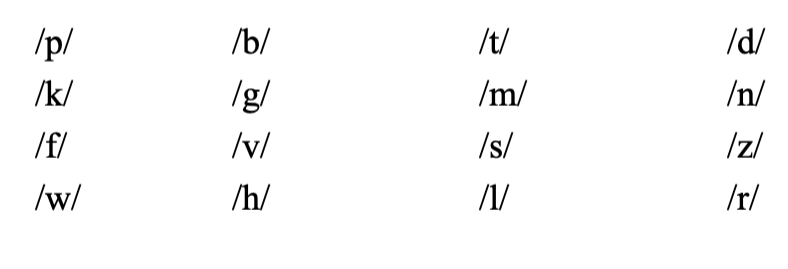
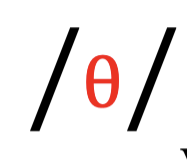
theta
thick, thud, bath
voiceless interdental fricative
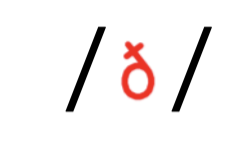
One of the 2 sounds represented by “th”
these, the, bathe, they, mother
voiced interdental fricative

represented by orthographic “sh”
there are other allographs that make this sound as well
show, sugar, machine, passion, anxious, ocean
voiceless palatal fricative

Used infrequently, one of the last sounds used by children
pleasure, rouge, lesion, television
voiced palatal fricative
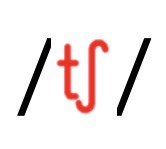
Usually represented by orthographic “ch” although other graphemes can represent this sound as well
chop, which, cello, match
voiceless palatal affricate
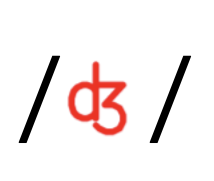
“soft g”, usually spelled with orthographic j and some g
judge, gym, age, gin, joke
voiced palatal affricate
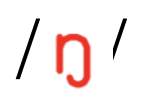
sing, rank, tongue, long, uncle, think
voiced velar nasal
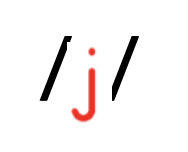
yes, yo-yo, yellow, yesterday, music, ice cubes
voiced palatal glide
Inverted “w”
historically transcribed as /hw/
disappearing from American english
frication in production (as opposed to /w/ which has no frication)
twine, when, whale, whey, why
voiceless bilabial glide

Glottal stop
airstream cut off at the glottic (space between the vocal folds)
sometimes not included as part of English phonemes - it is a dialectal variation
heard in :uh-uh”could be produced when saying “curtain” and “mountain”
you can feel the constriction at the level of the glottis as you say the glottal stop in a word
voiceless glottal stop-plosive
Flap
intervocalic one-tap trill
tongue contacts the alveolar ridge very briefly. Flap sounds like a /d/ of very short duration
when said rapidly, the following types of words include the flap phoneme: CITY, PRETTY, DAUGHTER, WRITER, PUDDLE, MODERN, NAUGHTY, BUTTER
consonants
A speech sound produced with a complete or partial obstruction to the airstream and combines with a vowel to form a syllable
Classification system for consonants
place, manner, voicing
consonants characteristics
a speech sound
Air moves through a partial or completely closed vocal tract during production.
can be voiced or voiceless
can have oral or nasal resonance
considered a closed sound
can be a singleton (ex., sun) or can occur in a sequence/cluster (ie., spot, past)
can occur in pre-, inter-, or post-vocalic positions within a word
Place of articulation
the places where the airstream is constricted by the articulators (where a sound is formed)
manner of articulation
the ways the airstream is modified by the articulators; (how a sound is formed)
voicing
tells whether or not the vocal folds are vibrating when the sound is produced
types of voicing, place, and manner
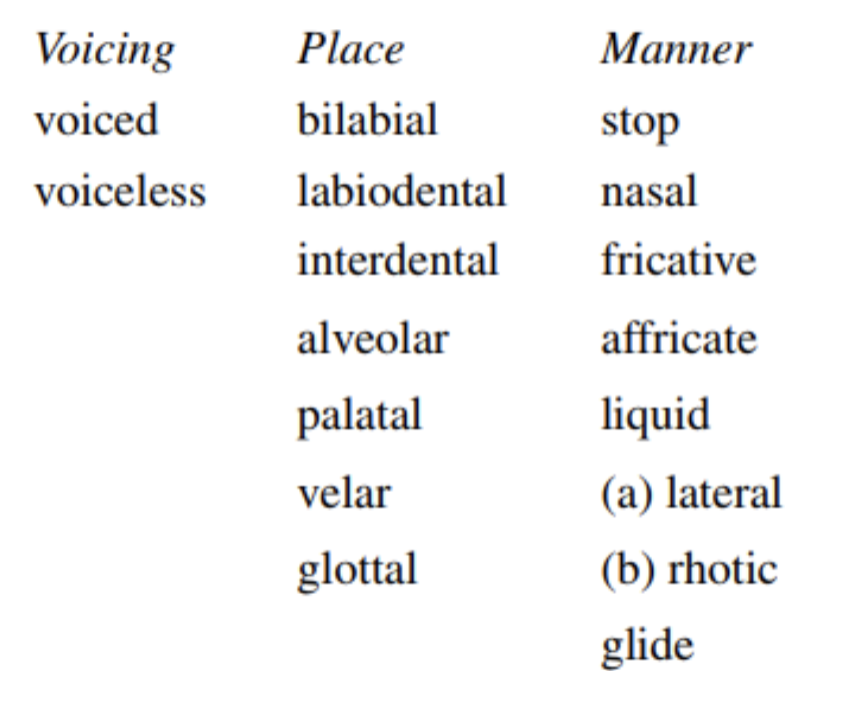
obstruent
a sound made with a complete or narrow constriction at some point in the vocal tract
stops
fricatives
affricates
sonorant
also includes vowels; produced with a relatively free flow of air through the vocal tract
nasals
liquids
glides
Stops
(obstruent)
produced with complete closure of the vocal tract, so that the airflow ceases temporarily and air pressure builds up behind the point of closure
pressure builds up behind the point of closure and is then released producing a short burst of noise (stop burst0
oral cavity is completely closed at some point
velopharynx is closed (so air does not escape through the nose)
stops can be “unreleased: at the end of a word; no stop burst
rapid articulatory movement
/p/, /t/, /k/, /b/, /d/, /g/
Fricatives
(Obstruent)
articulators form a narrow constriction through which the airflow is channeled
air pressure increases int he chamber behind the construction
as the air flows through he narrow opening, friction noise is generated
velopharync is closed (velum is raised)
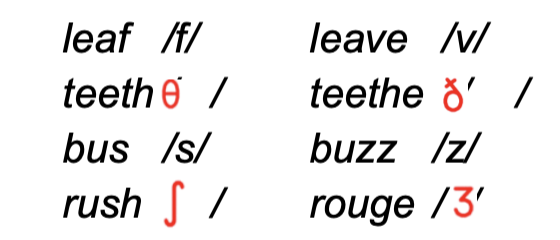
Affricates
(Obstruent)
combination of stop and fricative
air is built up (like a stop) then released as a Burt of noice (like a fricative); unlike stops, they must be released for their proper heard
velum raised: velopharynx closed
final consonants in the words “rich” and “ridge’
both palatal

Nasals
(sonorant)
sound energy created by pulses of air from the vibrating vocal folds must pass through the nasal cavities
usually produced with complete oral closure (like a stop), but with lowered velum (open velopharynx) - sound travels trough nose
can occur in syllable-initial, syllable-final, and intervocalic positions
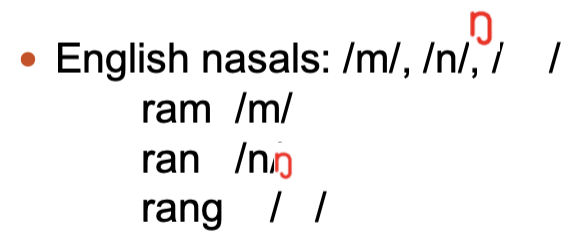
Liquids
sonorant
vowel-like consonants where the vocal tract is constricted only slightly more than for vowels
velum raised
sustained sound production
tongue makes a midline (central) closure with the alveolar ridge, but there is an opening maintained at the sides of the tongue
oral passage is narrower than for vowels. But wider than for stops, fricatives, and nasals
2 types: lateral /l/ - Low , Rhotic /r/ (consonant /r/) - Row
can occur in syllable-initial, syllable-final, or intervocalic positions
Rhotic Sound /r/
Two major ways to produce the soujd
retroflex /r/ - hold the tongue tip so it is pointed up slightly and not quite touching the alveolar ridge or the adjoining palatal area
Bunched /r/ - bunch the tongue in the palatal area of the mouth
Glides
sonorant
semi-vowel (resemble vowels; short duration)
gliding movement of articulators from a partially constricted state to more open for the following vowel
velum raised
cannot occur as the nucleus of a syllable
found exclusively in the prevocalic position
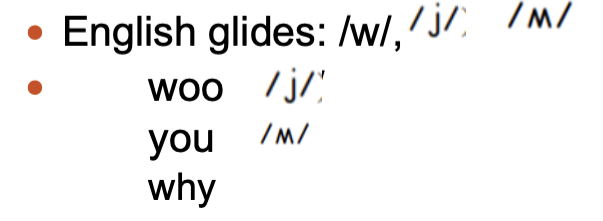
Categories of consonants
stridents - iahve intence fricative energy
affricates + labiodental, alveolar, and palatal fricatives
sibilants
alveolar and post alveolar (palatal) fricatives and affricates
place of articulation terms
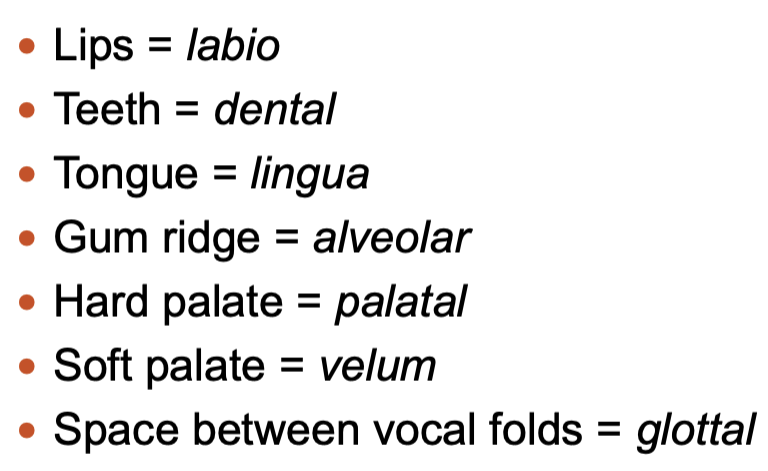
Bilabials
(both lips)
bilabial stops - /p/, /b/
bilabial nasal - /m/
bilabial glide - /w/
no English fricatives, affricates, or liquids are bilabials
labiodentals
constriction b'/t lower lip and upper incisors
/f/, /v/
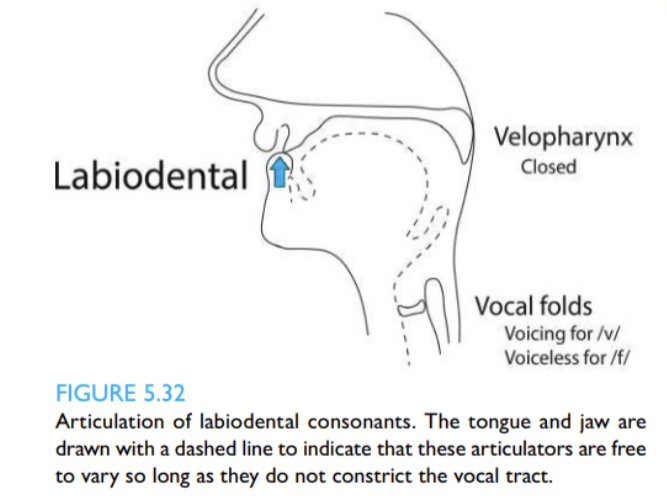
Lingua-dentals (also called interdentals)
both lingua-dnetals are fricatives

alveolars
most common place for consonant production
alveolar stops - /t/, /d/
alveolar fricatives - /s/, /z/
lateral (alveolar lateral)
alveolar nasal - /n/, /l/
Palatals
elevating tongue tip and blade toward palate
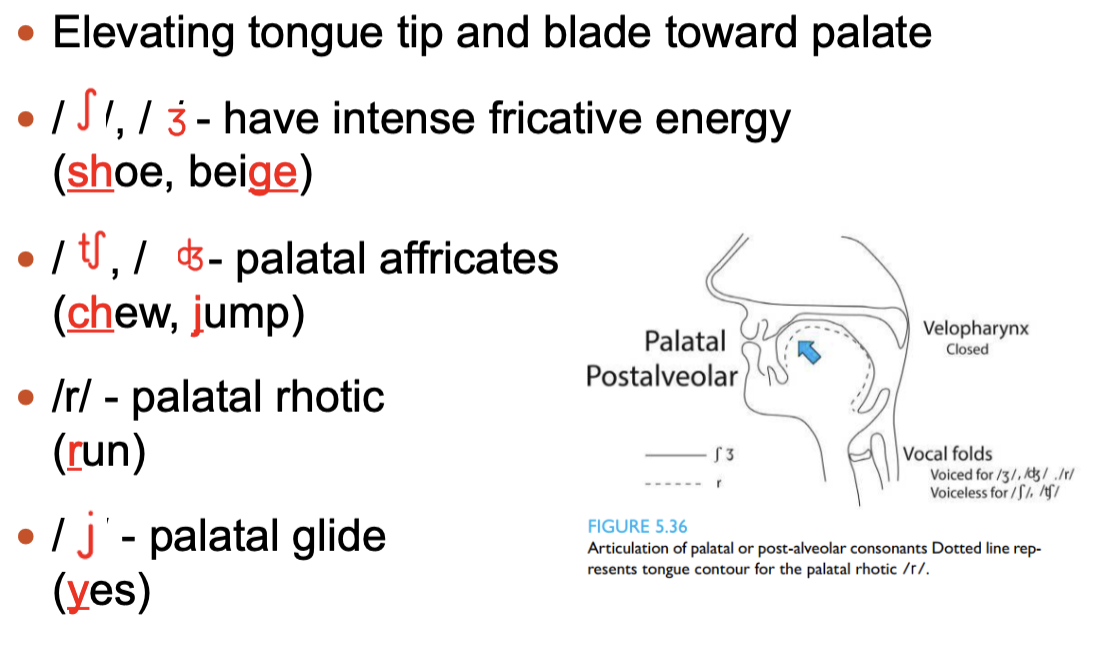
velars
velar stops - /k/, /g/
velar nasal (ring and wink
labio-velar glides /w/, /hw/
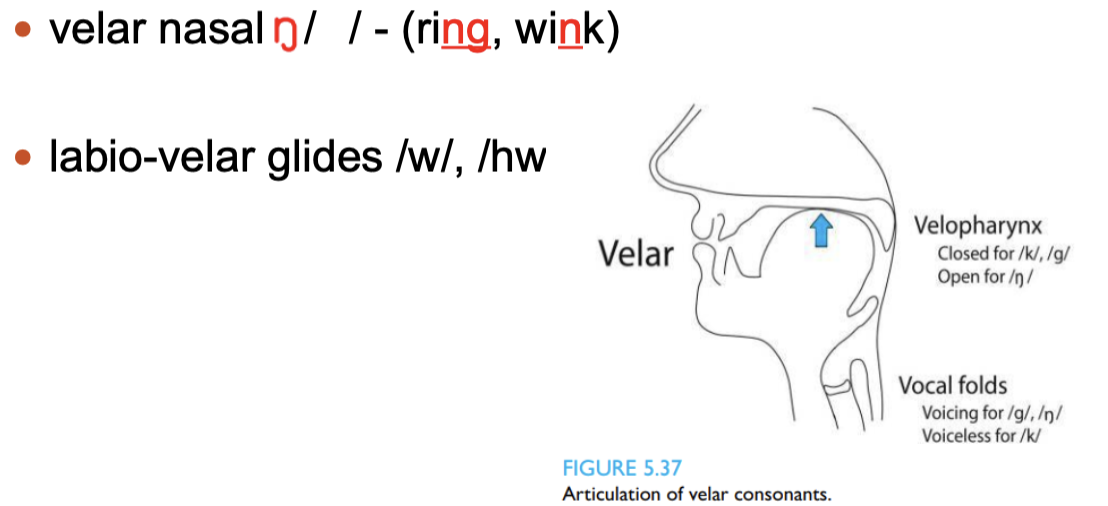
Glottals
Glottal fricative /h/
glottal stop - sometimes heard in certain English dialects
voicing contrast
cognates?
pairs of sounds that share the same place and manner of articulation but differ in the voicing feature
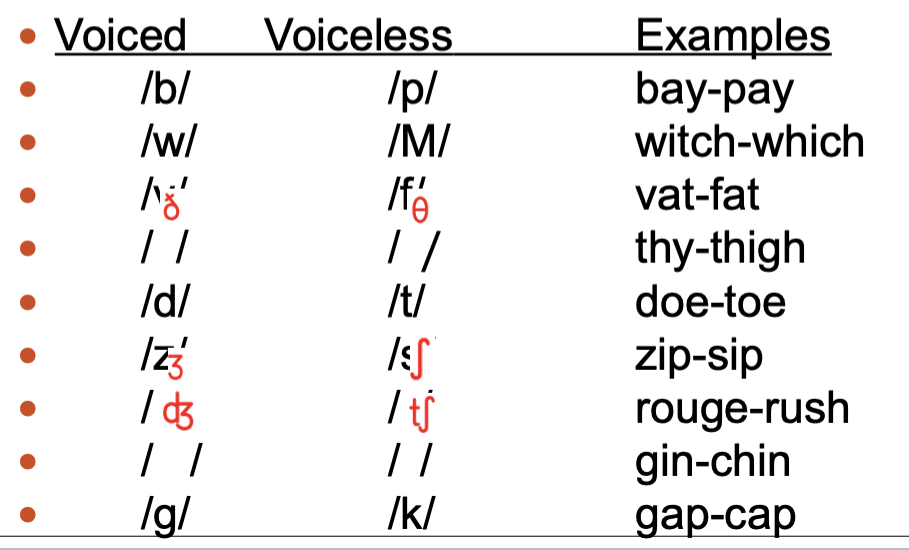
non cognates
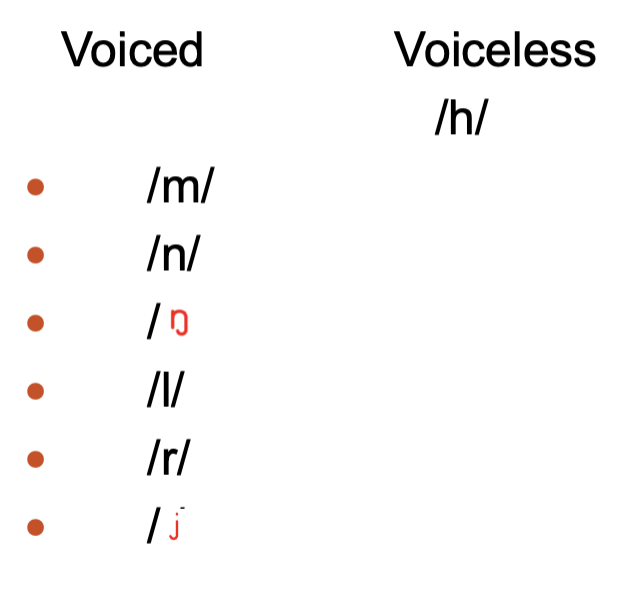
syllabic consonants:
omit the preceding vowel
a syllabic consonant becomes its own syllable
it is taking on the function of a vowel, which is the syllable nucleus

locations for place, voicing, and manner
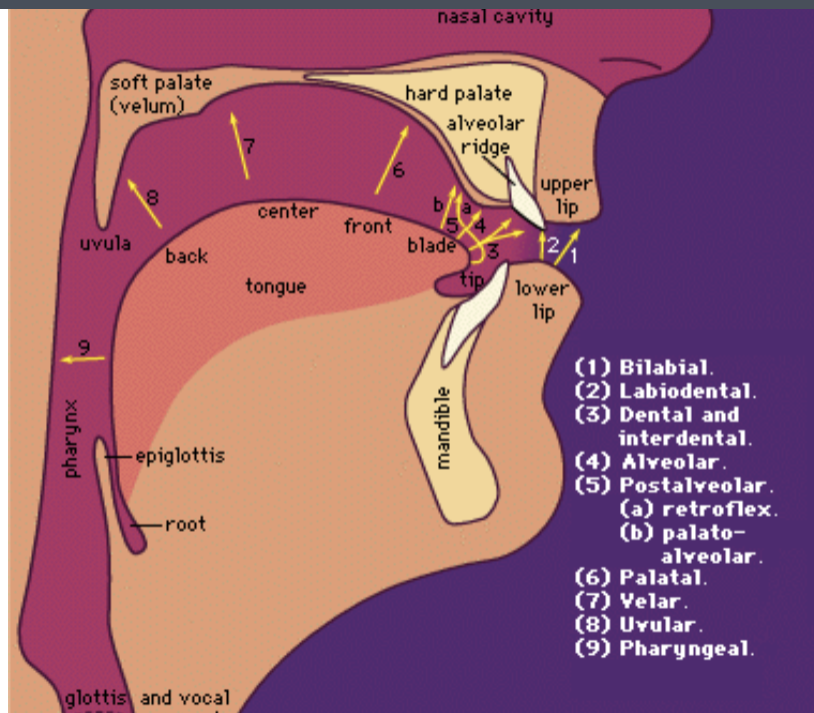
names for consonant symbols
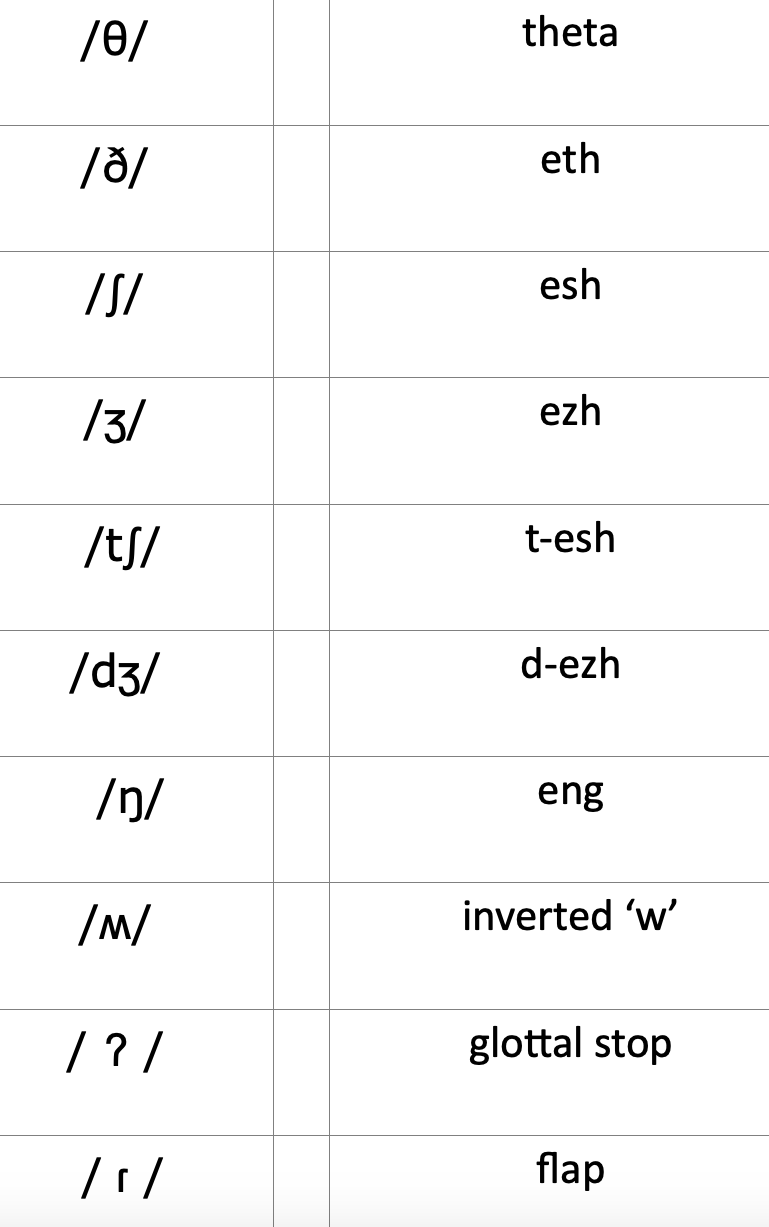
3 Major Functional Systems of speech production
Respiratory
Laryngeal
Supralaryngeal (or pharyngeal- oral-nasal)
Respiratory System Components
- diaphragm is most important muscle
-lungs
- ribcage
- abdomen
- associated muscles
Power for Speech: Acts as the pump to provide the movement of the air needed
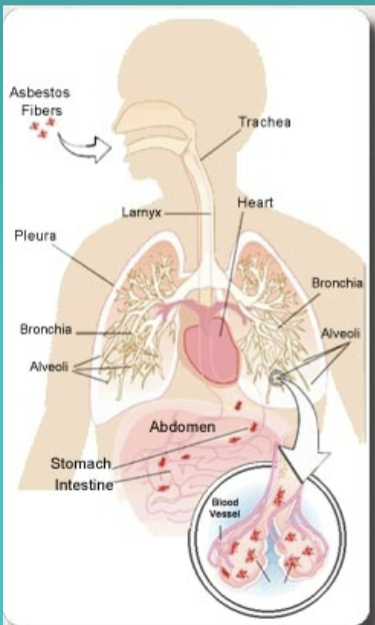
functions of the systems of speech production
Speech is an overlay function (secondary to the life-sustaining function of each)
Respiratory System (Power for speech)
Laryngeal System (Phonation)
Supralaryngeal System(Articulation & Resonation)
Speech/Articulation
Controlled action of over 100 muscles in the chest, abdomen, neck, & head
Fast! Conversational rates of up to 6 – 9 syllables per second (faster than texting or typing)
Relies on more muscle fibers than any other human mechanical activity 5
Respiratory system functions
Primary function : supply the blood with oxygen in order for the blood to deliver oxygen to all parts of the body
Secondary function : provide the power for speech
Respiratory System & Sounds in English
All sounds in the English Language are EGRESSIVE (produced with flow of air that moves OUTWARD from the lungs through the mouth or nose)
Some sounds in other language are INGRESSIVE (require INWARD movement of air) ex. Tongue clicks
Diaphragm
The most important muscle of respiration.
Separates the chest cavity from the stomachSeparates the chest cavity from the stomach
(Respiratory)
Respiration
Pump-like action
– When the diaphragm contracts, oxygen is pulled into the lungs and volume of the thoracic cavity expands
– When the diaphragm relaxes , carbon dioxide is pumped out of the lungs and volume of the thoracic cavity contracts
Respiration Function
inspiration – air drawn into the lungs
expiration – releases air into larynx and supralaryngeal system for the purpose of generating speech
provides additional energy for louder volumes and lifting heavy objects
Respiration: Breath Group
breathing patterns?
– Sequence of words or syllables produced on a single expiration
– Distinctive for oral communication (speech)
– Typically, we can speak for no more than 10 seconds on a single breath group
– Normally, we interrupt inspiration at syntactically appropriate places (phrase, clause, sentence boundaries)
– Breath group coincides with syntactic units
- quiet breathing – The rates of inspiration (40%) and expiration (60%) are about the same
- Speech breathing - The rate of inspiration is quicker than expiration about 10% to 90%
Laryngeal System
Primary life-sustaining function
keeps foreign material (foods/liquids) out of trachea and lungs
Function for speech
phonation (vibration of the vocal folds)
Laryngeal System Components
Larynx - made up of cartilage and muscle
located on top of trachea (connects the lungs to the larynx
3 cartilages - Cricoid, thyroid, arytenoid
Inside the larynx are the vocal folds
vocal folds - cushions of muscle located inside larynx; shorter in women than men
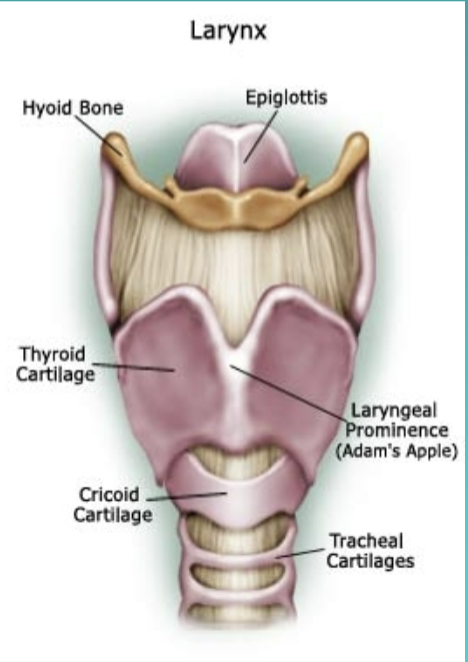
Epiglottis
closes the entrance of the voice box (larynx) and trachea during swallowing
a leaf-shaped flap of cartilage located behind the tongue
attached to the thyroid cartilage and hyoid bone
usually upright at rest allowing air to pass into larynx and lungs
(Laryngeal)
vocal folds
small cushions of muscle
males - ¾ of an inch long
shorter in women and children
attach tot he Adams apple in the front
(Laryngeal)

vocal fold vibration
muscles of larynx bring vocal folds together (adducted) at onset phonation
force of air developed in lungs blows them apart (abducted)
Rate of VF vibration (number of open-close cylces per unit of time) is about 125 per second for an adult male
250 per second for an adult female
Higher for children
Newborn – 500 per second
Differences in cycles per second we perceive as differences of pitch 24
Fundamental frequency (foo)- basic rate at which vocal folds move (determined by size of vocal(determined by size of vocal folds & muscle/tension – alter the rate of vibration)folds & muscle/tension – alter the rate of vibration)
Pitch is the acoustic correlate of frequency
Frequency is measured in Hertz (Hz)
One Hz is one complete vibration per sec.
Changing pitch (ex. higher pitch: faster vibration)
Supralaryngeal System
part of the speech system that is ABOVE the larynx
“pharyngeal-nasal-oral system (3 major cavities)
Cavities of the Supralaryngeal System
pharyngeal cavity or pharynx (muscular tube also referred to as throat)
oral cavity
nasal cavity
Supralaryngeal System components
Process – direct air flow orally or nasally through the position of the velum
Velopharyngeal port - (oropharynx) - opening between oral and nasal cavities
velum (soft palate) - raise or lowers to direct air flow for oral vs nasal sounds - uvula is the ip of the velum

articulation (mobile/immobile)?
process of moving structures of the vocal tract so that they join together in different positions
Mobil/active articulators - velum (soft palate), mandible, tongue, lips, and pharyngeal walls
immobile articulators: alveolar ridge, hard palate, teeth
some articulators can change in shape and position (ex. tongue), some only change in position (ex. Jaw), and some do neither (ex. hard palate)
velum
radiation of sound
moves upward (raises) to close off the nasal cavity for ORAL radiation of sound
lowers to open up the nasal cavity for NASAL radiation of sound
Articulation - acts as a point of contact for velar sounds, /k/ and /g/
(supra laryngeal)
Jaw
mandible - active/mobile
contributes to the movements of the tongue and lower lip
temporomandibular joint (TMJ)
some protrusion and retraction
(supra laryngeal)
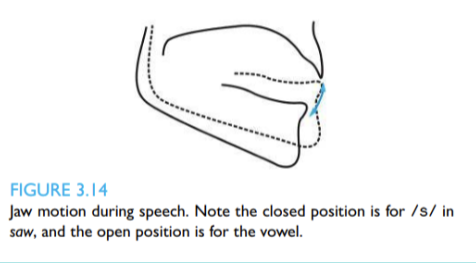
Tongue
muscular organ
support from jaw and hyoid bone
lengthens and narrows
flattens and expands width
classify VOWE;S by the movement of the tongue
tip → blade → dorsum → root. = BODY
(supra laryngeal)
lips
open and close (ex: /p/,/b/)
round or retract for certain vowels /I/ vs /u/
(supra laryngeal)
scientific names for…
tip of tongue
Adams apple
soft palate
voice box
lower jaw
wind pipe
apex
laryngeal prominence of the thyroid cartilage
velum
larynx
madible
trachea
Phonetics
The study of the production and perception of speech sounds.
Using a system of symbols to that accurately and reliably represent the sounds of a language.
Clinical Phonetics
The application of phonetics to clinical populations.
Describes speech differences and disorders
Includes knowledge about speech sounds and perceptual skills used in clinical settings.
Spelling vs Phonetics
There is a difference between “spelling” and “phonetics.”
The spelling of a word doesn’t indicate how the word is pronounced in the English language
Example: The letter ‘a’ - cake: had: father: many
How will you use phonetics as an SLP?
To transcribe speech produced by clients - during evaluation, therapy to monitor progress
to teach accurate sound production to clients
to help clients discriminate correct and incorrect productions
Phonology
The study of the sound system of a language: the structure and function of the sounds.
This includes the variations of the sounds and the rules for combining them.
Phonotactics
Phonological rules that dictate what positions in the syllable a phonetic segment is permitted to occupy and how the sounds can combine
English examples: the phonemes /l/ and /r/ are never adjacent to one another within the same syllable. Across syllables this is permissible, as in “ballroom”
the “ng” sound in “sing” never occurs at the beginning of a word
Areas of Phonetics
Acoustic phonetics
- physical properties of soundfrequency, amplitude, duration
Articulatory phonetics
(aka physiological or informational or descriptive phonetics)
– how and where sounds are produced in the dynamic vocal tract
Perceptual phonetics
study of how we hear & interpret speech sounds.
informational domain
knowledge about speech sounds - This domain is also known as articulatory phonetics and this domain includes information about how the phonemes are produced
examples": vowels are always voiced, vowels form the nucleus of the syllable. “r-sounds” may be vowels or consonants
schwa (the first phoneme in the word Above and the final phoneme in the word sofA) is the most frequently-occuring speech sound in the English language
Are the sounds voiced or voiceless?
are the sounds produced with an open vocal tract or constrictions in the vocal tract?
is there a complete stoppage of air or does the air have a continuous flow?
perceptual domain
How we perceive and discriminate productions of speech sounds
This class emphasizes listening (perceptual discrimination) of speech sounds and then describing them using phonetic symbols (phonetic transcription).
skills of the clinician: linguistic, response, and system complexity
linguistic complexity
This progression parallels a common progression in clinical management of speech disorders
isolation → word → sentence → conversation
response complexity
one sounds
multiple sounds
ex: Pig, cuP to pig and cup
system complexity
two-way scoring
five-way scoring
phonetic transcription
increases in complexity
Two-way Scoring
Task that requires the clinician to make a binary decision about the speech behavior
Correct v. incorrect
who can achieve this type of scoring?
five-way scoring
requires a clinician to go a step further
decide incorrect v correct
decide what type of error the client mas
substitution
omission/deletion
distortion
addition
phonetic transcription
describe what the client says
more complex than the 2 or 5 way scoring
international phonetic alphabet
broad or narrow transcription
only carried out by trained clinicians
identification of variants of phonemes (allophones)
for an SLP, phonetic transcription is the use of IPA as a visual representation of speech sounds
uses diacritic marks and bracket [. ]
morphology
morpheme
study of the meaning-based units of the language - individual morphemes
smallest unit of meaning
can be
words (cat)
plural endings (cats)
verb tense endings (walked)
prefixes (unhappy)
suffixes (quickly)
phonemes
Phonemes are speech segments (sounds) that differentiate morphemes such as BAT and HAT.
about 43 phonemes in english
If the sound change alters meaning, each sound is a separate phoneme
Minimal pairs – ex. hot, pot, cot, rot, lot
allophone
Allophones are phonetic variations of a phoneme, meaning it may sound slightly different, but it doesn’t change the meaning of the morpheme.
An allophone is your actual attempt at producing the phoneme
Most of our sound productions are a little bit different each time - they occur in different contexts, with different adjacent phonemes, with varying duration
examples:key vs coke
time vs hat
Phonemic Transcription
Transcription – analytic representation of speech sound production
International Phonetic Alphabet (IPA)
some phonemes have symbols representing the sound that is the same as the letter (grapheme) ex: /d/, /t/, /l/
identification of sound segments that have linguistic significance in a language - the phonemes
uses slashes //
perceptual phonetics
system complexity - methods of discriminating sounds
a) Binary (2way, correct or incorrect)
b? 5 way scoring - correct; substitution; omission; distortion; addition (SODA)
c) Transcription: - narrow vs broad transcription (phonetic vs phonemic)
Linguistic phonetics
language vs speech
Language- common code among a group for symbolically representing ideas & concepts
Speech - mode of spoken language expression
linguistic analysis:
dictionary
lexicon
phonemic system
phonetic events
words
morphemes
phonemes
allophones
dialects
differences in pronunciation, vocabulary or grammar within a language
morphemic transcription
identification of meaningful units
linguistic analysis examples of “cats”
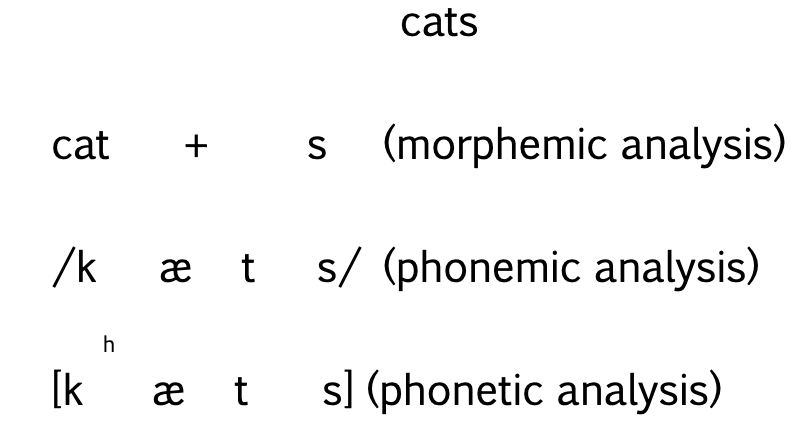
word position of sounds
Consonant positions:
prevocalic: sound occurs before a vowel - TO
postvocalic: target sound occurs after a vowel - AT
Intervocalic: sounds occurs between two vowels in a word with 2+ syllables - WAGON
(initial, medial, final: position in words where phonemes occur)
syllable types
syllable initial and final sounds
Syllable shapes
types:
open - syllable ends in vowel sound
closed - syllable ends in consonant sound
Syllable initial and final sounds
releasing - initial sounds in a syllable
arresting - final sounds in a syllable
Syllable Shapes:
V, CV, VC, CVC, CCVC, CCCVC
Simple vs complex syllable
simple - a syllable that contains no consonants or only singleton consonants
ex: eye = V; my=CV; I'm=VC; mine=CVC
Complex syllable - a syllable that contains at least one sequence
ex: ask=VCC; spy=CCV; sprint=CCCVCC
Characteristics of vowels:
1. Vowels are voiced (vocal fold vibration)
2. Vowels resonate in the oral cavity
3. No significant constrictions/ open vocal tract
4. Vowels are the nucleus of a syllable (one sound per syllable)
most acoustic energy
Vowels are Classified in 4 ways:
tongue height (jaw opening) – high mid low
tongue advancement – front central back
tongue tension (duration) – tense or lax
lip rounding
Monophthongs
pure vowels; production is the same from beginning to end; minimal movement of the tongue during production of a pure vowel; 14 of them (see the Vowel Quadrilateral)
1 sound; single unchanging sound quality
Ex. who /u/ hat /æ/ hid /ɪ/
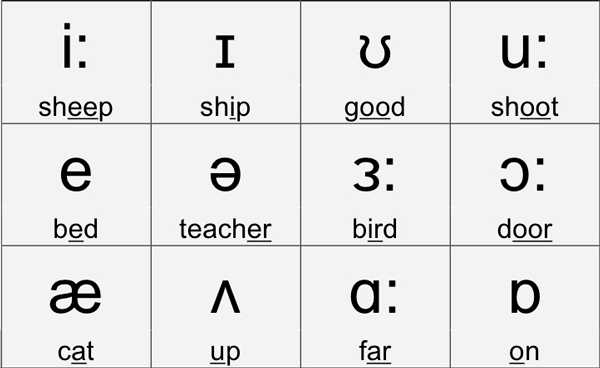
Vowel quadrilateral
A graphic representation of the position of the tongue in the mouth when producing vowel sounds. Note the phonetic and the orthographic symbols used in the dictionary
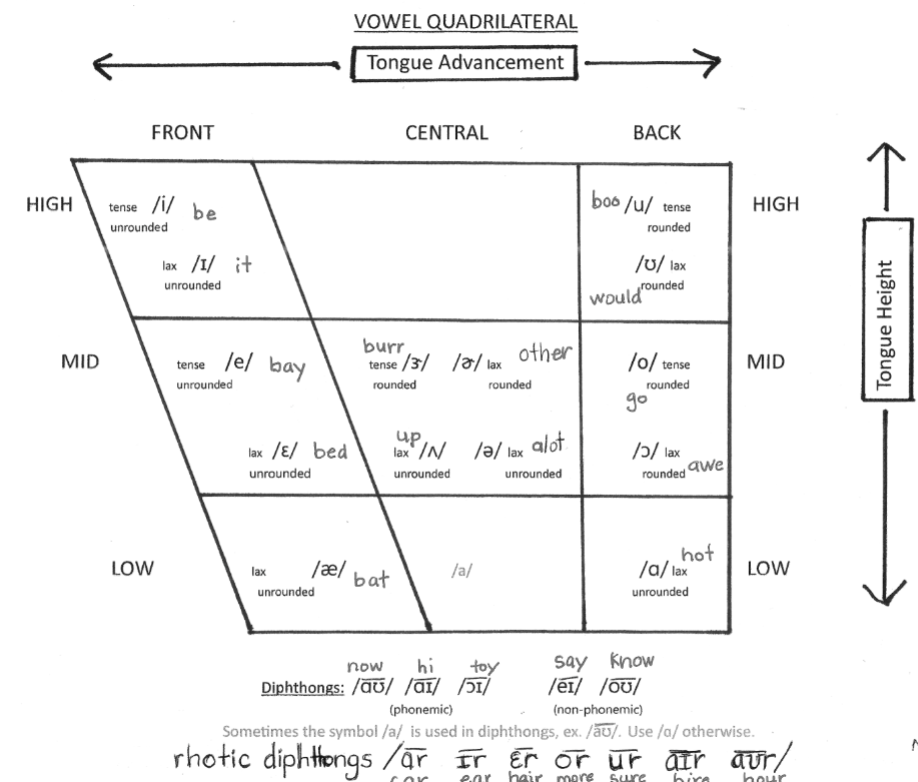
Point vowels/corner vowels
These 4 vowels represent the most extreme position of the tongue, as far as advancement (front to back) and height (high-low), when producing vowels.
They are the vowel sounds in he /i/, who /u/, hat /æ/ , hot /ɑ